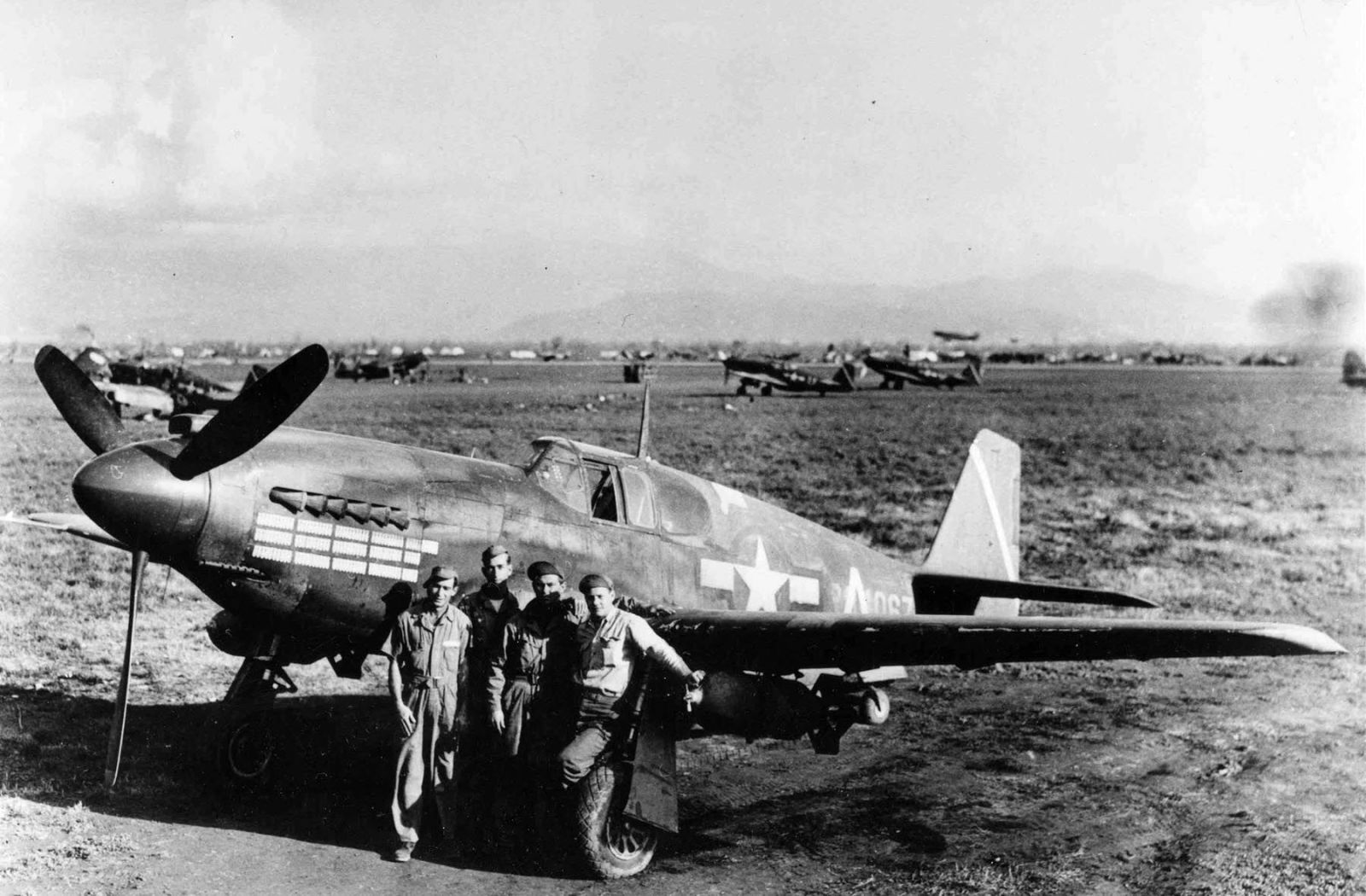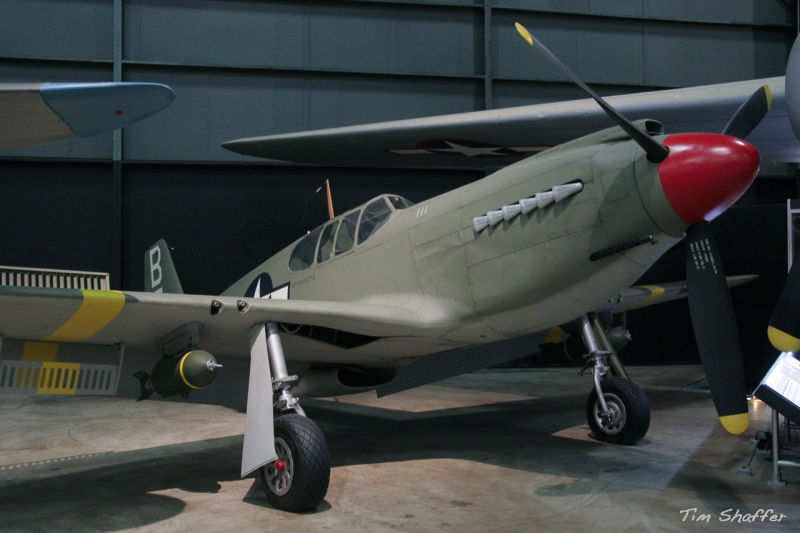
Nope, not a Mustang. It’s an A-36 Apache, though in practice, the name Apache was rarely used, and most just called it a Mustang. Apache crews wanted to call it Invader, but that name was never officially adopted. The A-36 was the ground attack version of the P-51, and actually saw combat before the high-flying Mustang. You can tell it’s an A-36 by the three-bladed propeller, the .50s poking out of the nose, and, if you could see them, the slotted dive brakes on the wings and Allison engine. While the Allison was unsuited to the rarified air where the Merlin-powered Mustangs tangled with the Lufwaffe, it was more than adequate for low level ground attack and dive bombing.

The A-36 joined the war in April 1943 and saw service in the Mediterranean and the CBI, and was particularly effective during the invasion of Sicily and in the push up the boot of Italy. Though designed to hit targets on the ground, Apache pilots also claimed 84 enemy aircraft, and one A-36 pilot became the only ace to fly an Allison-powered Mustang. Like the P-51, the A-36 was particularly susceptible to ground fire due to its ventral radiator, and they were withdrawn from combat at the end of 1944 due to high losses.
For more stories about aviation, aviation history, and aviators, visit Wingspan. For more aircraft oddities, visit Planes You’ve (Probably) Never Heard Of.